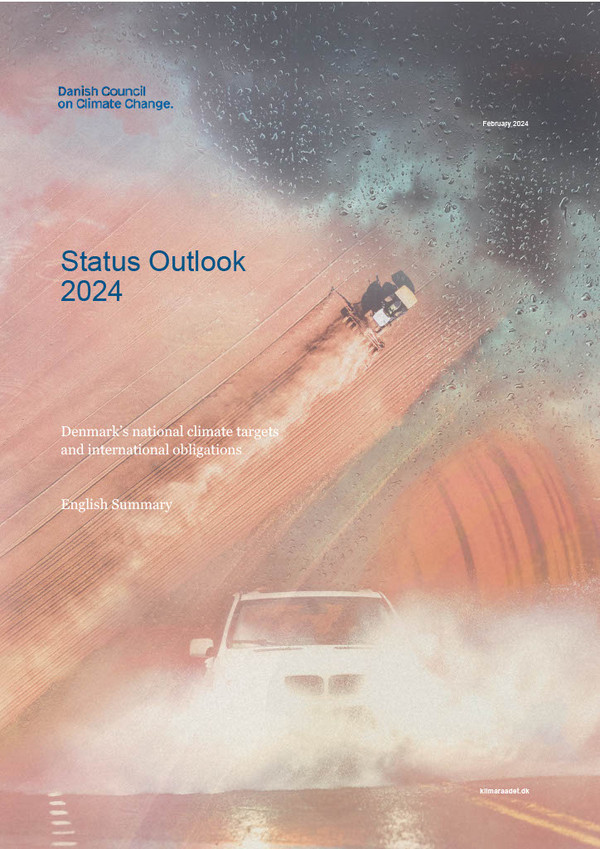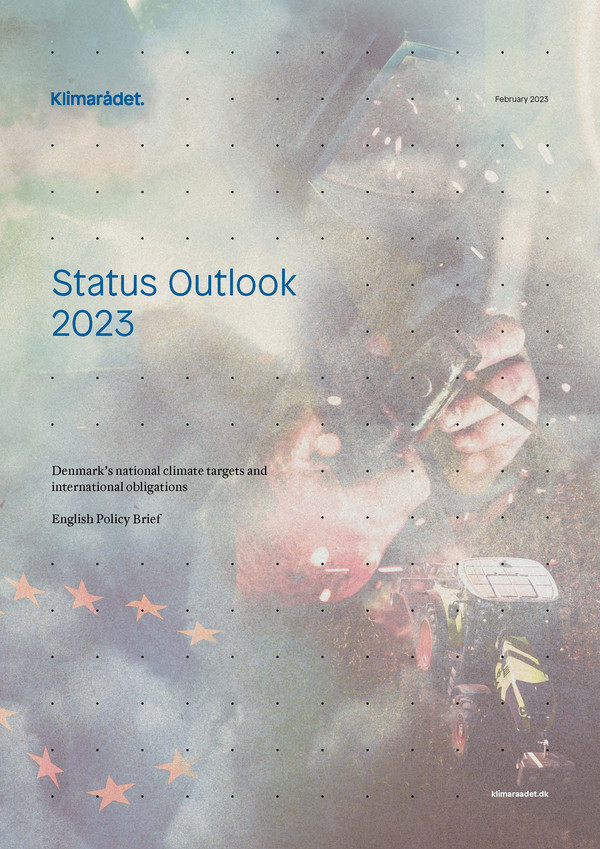
Transition Towards 2030

Preface
In the report Transition Towards 2030 – Building Blocks for a Low-Carbon Society the Danish Council on Climate Change presents its proposal for a strategy that can help Denmark reach its 2030 target, taking into consideration its long-term goal of becoming a low-carbon society by 2050. In this year’s report the Danish Council on Climate Change has chosen to focus on the elements of transition that should form part of Denmark’s transition to a green economy towards 2030, as an important step on the road to becoming a low-carbon society by 2050.
In the years to come the Danish Parliament must reach a new energy settlement, and in connection with its climate policy report of 2017 the government will present a climate change plan compiling the government’s energy initiatives. In its government platform the current Danish government, formed in the fall of 2016, requests the Danish Council on Climate Change’s recommendations for the best approach to the non-ETS sector transition, and therefore this report focusses on ‘cars, agriculture and homes’ in particular, which is the popular name in Denmark for this part of the economy. With this report the Danish Council on Climate Change hopes to be able to inspire the government and the remaining parties in the Danish Parliament to discuss the potential of the individual elements of transition and how they may contribute to meeting the 2030 targets, while taking into consideration the final 2050 target of becoming a low-carbon society by 2050.
The report by the Danish Council on Climate Change is based on the Danish Energy Agency’s overall estimate of the required reduction. The agency raised the estimate after the completion of this report from 9.4 million tonnes of CO2 to 13.4 million tonnes of CO2. As this adjustment significantly changes the premises of the report, the Danish Council on Climate Change has produced the insert The Danish Energy Agency Has Raised Its Estimate of Reductions Required in the non-ETS Sector Towards 2030 (available at the end of this document) containing the Danish Council on Climate Change’s additional recommendations for meeting the target in light of the new situation.
Introduction
The Danish Council on Climate Change regularly produces recommendations for Danish climate policy, including paths of transition and instruments for realising the targets set by the Climate Change Act. The 2016 government platform tasked the Danish Council on Climate Change with providing recommendations for meeting Denmark’s reduction targets for the non-ETS sector by 2030.
While the Climate Change Act is based on the Danish aim of becoming a low-carbon society by 2050, the climate policy Denmark is faced with implementing today is more short term. In this report the Danish Council on Climate Change therefore seeks to identify the best way of preparing this transition in the decade to come. If we are to realise our ambition of becoming a low-carbon society by 2050, it is vital that the transition towards 2030 proceeds in the right direction and at an appropriate pace.
To gain an overview of such a broad task, the Danish Council on Climate Change uses the concept element of transition in this report. Elements of transition here refer to transitions within production or consumption, which can function as building blocks in the effort to create a society that emits markedly less greenhouse gas. This may e.g. include the introduction of electric cars, biogasification of manure or energy renovation of buildings. In this report the Danish Council on Climate Change has explored the potential of 20 different elements of transition with a view to putting together a package of elements enabling Denmark to meet its 2030 target based on a set of clear criteria.
The Danish Council on Climate Chance also considers the international context. The EU to a large extent sets the framework for Danish climate and energy policy, and this report accounts for the latest developments within European climate regulation. The report also focusses on the global climate agenda and the Paris Agreement. Although the Paris Agreement represents an important step in the right direction, it is not sufficient for keeping the global warming below two degrees. Incorporated into the agreement is therefore the expectation that the individual countries’ level of ambition with regard to emission reductions will rise, and we are therefore likely to see the EU raise its climate ambitions in the next few years, which Denmark should be prepared for in its efforts to meet the set targets.
Transition of the non-ETS Sector Towards 2030
The main question of the report is how Denmark best can reduce greenhouse gas emissions in the non-ETS sector towards 2030.
The Danish Council on Climate Change’s analysis of Denmark’s ability to meet the 2030 target builds on the concept of element of transition, which refers to climate-friendly changes to production or consumption. Focussing on elements of transition makes it possible to concretise the discussion of Denmark’s attainment of the 2030 target, setting a direction for the transition towards a green economy within different parts of society.
The Danish Council on Climate Change identifies two main criteria for the selection of elements of transition for meeting the 2030 target. These are price and whether the element points in the direction of Denmark’s 2050 climate target. The socioeconomic prioritisation of elements should be based on these two criteria.
The analysis of the individual elements of transition considers both their price and potential compared to the reduction of greenhouse gas emissions, but not which taxes, subsidies, requirements or other policy measures are necessary to realise these elements of transition. We thus distinguish between elements of transition and instruments and are thus able to keep deliberations at a more general level and to avoid discussing who will pay for what. Naturally, instruments are vital to the implementation of climate policy initiatives, and a future analysis of main instruments could follow and build on this report.
More Elements of Transition Are Required to Fulfil the New Reduction Requirement
The Danish Energy Agency has raised its estimated reduction requirement from 9.4 million tonnes of CO2 to 13.4 million tonnes of CO2.
The Danish Energy Agency’s General Projection 2017 constitutes the official source for assessing Denmark’s chances of meeting its climate targets. Therefore, the report by the Danish Council on Climate Change is based on the estimated reduction requirement presented in the general projection for meeting the 2030 target in the non-ETS sector. After publishing the general projection, the Danish Energy Agency adjusted the estimate and released a formal correction on 29 May 2017.
In this report the Danish Council on Climate Change has explored 20 elements of transition within various sectors and points to eight elements of transition which together reduce emissions in the non-ETS sector by 12.0 million tonnes of CO2e from 2021 to 2030. This means that Denmark is 1.4 million tonnes short of meeting the adjusted reduction target.
In general, the analysis by the Danish Council on Climate Change shows that Denmark will be able to meet the non-ETS sector target. There is therefore reason to consider a greater reduction than indicated by the estimated central reduction requirement. In the report the Danish Council on Climate Change points to two additional elements of transition, which may be relevant if Denmark wishes to aim for a greater reduction of greenhouse gas emissions before 2030, namely energy willow and wood pellet boilers.
Adding these additional elements of transition will enable Denmark to meet the adjusted reduction target. In addition, the Danish Council on Climate Change points to biogas in the natural gas grid as a way of further increasing the reduction.
After adding these elements of transition the Danish Council on Climate Change now points to a total of 11 elements of transition to be prioritised in Danish climate policy towards 2030.
Table 1 thus replaces tables 1.1 and 6.1 in the report.
Denmark’s Climate Targets
Denmark meets most of its 2020 targets, but lacks a new policy towards 2030.
By 2050 Demark must be independent of fossil fuels. In this process Denmark is under obligation to meet a series of climate targets, most of which have been decided at EU level. The Danish Council on Climate Change expects Denmark to meet most of its targets for 2020, but political action is required if we are to meet the EU reduction target for the non-ETS sector by 2030 and the government’s own target of 50 per cent renewables within energy supply.
The latest projection by the Danish Energy Agency expects Denmark in 2020 to meet the EU’s demands for both increased use of renewable energy and lower emissions in the non-ETS sector. Similarly, Denmark appears to be able to meet the 40-per cent reduction target for all Danish emissions, compared to 1990 levels, previously backed by a majority in the Danish Parliament. However, the projection shows that a new set of initiatives is required if Denmark is to meet its EU target for the use of renewables in the transport sector by 2020.
For 2030, it is a different story. Many of the present climate measures and initiatives will expire a few years from now, and then, the projection shows, the transition to a green economy will come to a halt unless new climate and energy initiatives are implemented. Political action is therefore required if Denmark is to meet the 2030 EU target of a reduction in non-ETS sector emissions and the government’s own target of 50 per cent renewables in the energy supply.
The Government Has Set 2030 Target for Renewable Energy
The target of 50 per cent renewables by 2030 will come to govern the transition within Danish energy supply and transport in the next few years. The coming energy agreement should establish a stable framework for the transition to renewable energy over the next decade, ensuring that Denmark as a minimum is able to meet the government’s target of 50 per cent renewables by 2030.
Need for Higher Level of Ambition Globally
The Danish Council on Climate Chance also considers the international context. The EU to a large extent sets the framework for Danish climate and energy policy, and the report accounts for the latest developments within European climate regulation.
The report also focusses on the global climate agenda and the Paris Agreement. Although the Paris Agreement represents an important step in the right direction, it is not sufficient for keeping the global warming below two degrees. Incorporated into the agreement is therefore the expectation that the individual countries’ level of ambition with regard to emission reductions will rise, and we are therefore likely to see the EU raise its climate ambitions in the next few years, which Denmark should be prepared for in its efforts to meet the set targets.
In December 2015 the world’s heads of state agreed on the most extensive global climate agreement to date. The aim of the Paris Agreement is to keep global temperature rises ‘well’ below two degrees, compared to pre-industrial levels, with a view to limiting the rise to 1.5 degrees. According to the Danish government platform, Denmark must contribute to meeting this ambitious target at national and international levels.
The Paris Agreement constitutes an important step in the right direction. The countries must raise their climate ambitions significantly if they are to reach the target. If the next few decades do not see the passing and implementation of larger mitigation efforts, the need for reducing greenhouse gas emissions will increase dramatically from the middle of this century onwards.
The global greenhouse gas budget creates expectations of increased climate ambitions in the EU. Naturally, this will affect Danish climate policy, which therefore should take this likely increase in EU targets into account.



